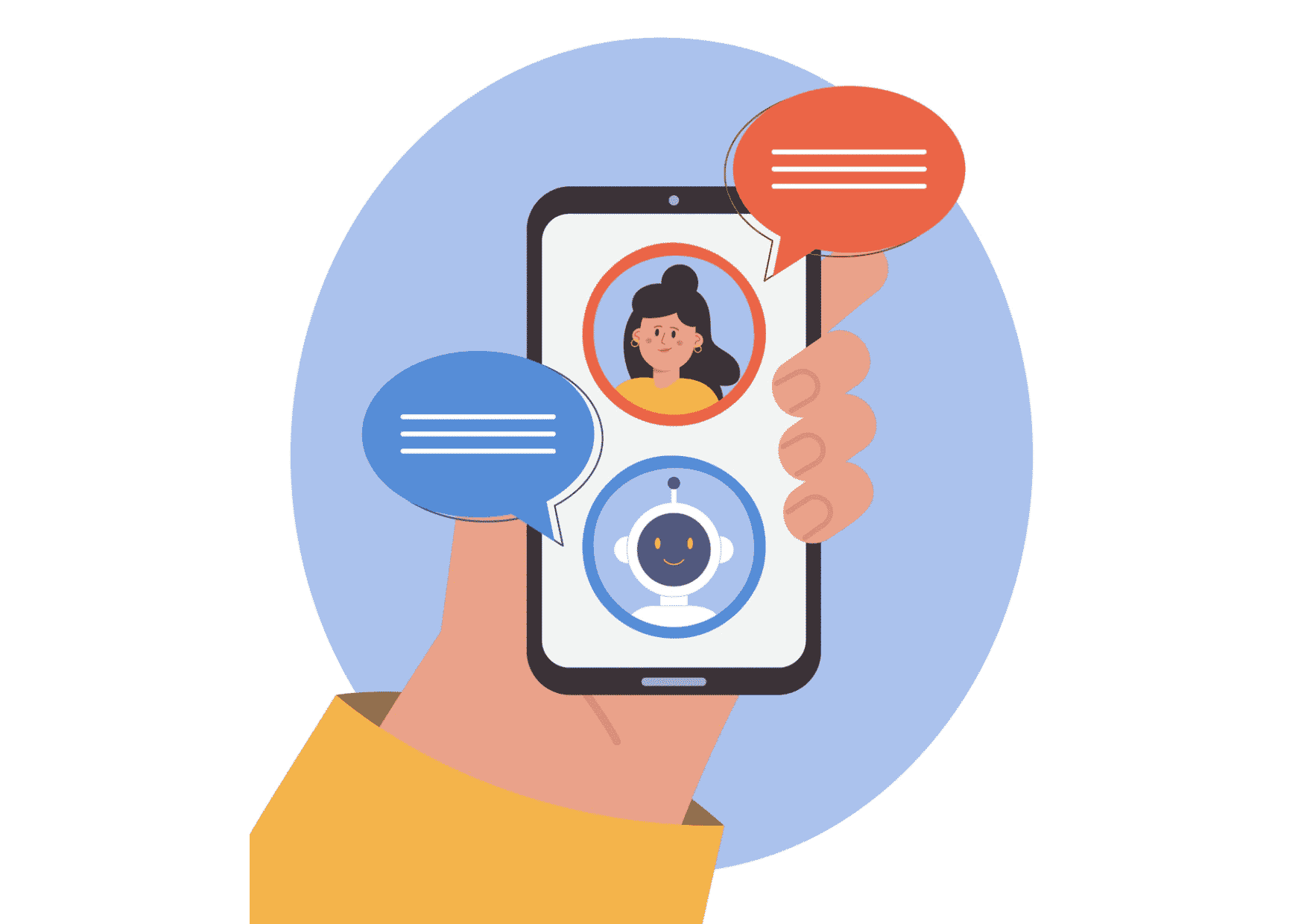
Introduction
Chatbots and IVR are two commonly used technologies in the customer service process. A lot of times they are pitted against each other because they are perceived as competition. Both have their pros and cons, and they have several features in common. They have differences; however, organizations don’t necessarily have to choose between one or the other.
Table of contents
Chatbots
First, we will start out by exploring what a chatbot is. At the most basic level a chatbot is simply a program that stimulates and processes human conversation. This allows humans to interact with digital devices as if they were talking to a real person. Chatbots can be simple, but they can also be complex. For example, they could answer simple questions with one-line responses, or they can be very sophisticated and serve as digital assistants that grow and learn as they keep gathering information. More than likely, you have interacted with a chatbot while surfing the internet.
For example, amazon’s Alexa is a chatbot, so is Apple’s Siri that comes pre-installed on the iPhone. These are examples of complex chatbots. A simpler chatbot would be found when browsing some websites and a window pops up on your screen asking if you need help. Now that we know what chatbots are, let’s look a little into how they work.
There are two main types of chatbots, one is called task oriented declarative chatbots. The other is known as data-driven and predictive conversational chatbots. A task oriented chatbot is a single purpose program that focuses on performing solely one function. These use rules, natural language processing, and very little machine learning. Interactions with these chatbots will be related to support issues. These are the most widely used chatbots currently. On the other hand, data driven chatbots are much more sophisticated, interactive, and personalized compared to task oriented chatbots.
Also Read: How to Make an AI Chatbot – No Code Required.
These chatbots use natural language understanding, natural language processing, and machine learning so they can learn and evolve as they go. They apply predictive intelligence and analytics to enable personalization based on user profiles and past user behavior. These chatbots can learn a user’s preferences over time, provide recommendations, and even anticipate needs. In addition to monitoring data and intent, they can even initiate conversations. Next, we will look at the pros and cons of using chatbots.
Also Read: What is the Elbot Chatbot? What Makes it So Smart
Chatbot Pros and Cons
There are many pros and cons of using chatbots.
Some pros of using chatbots include:
Faster customer service. Since chatbots can be programmed to solve simple questions that customers may have, it leaves time for the main team to focus on more complex issues.
24/7 availability. Unlike humans chatbots can be active 24 hours a day, 7 days a week. This allows them to answer customer questions while the customer support team is off from work.
Helps manage customer requests. Customers like having their questions answered immediately, which is what the chatbot can do. There is also no upper limit to the number of requests that a chatbot can handle. This allows it to answer hundreds of customer questions all at the same time.
Some cons of using chatbots include:
No understanding of natural language. Most simple chatbots that you will find on the internet will not be able to understand typical human language. This includes slang, misspellings, and sarcasm.
Not emotive or personalized. Frustrated customers would most likely want their emotions to be met with empathy which a chatbot is unable to do. If the questions or conversation do not follow a specific path, the chatbot will be unable to adapt.
High capacity for misunderstandings. If a customer’s question is not specific enough, the chatbot will have no idea how to help. This is the biggest disadvantage when implementing a chatbot. If a customer asks a question outside the list of answerable questions programmed into the bot, it will malfunction, which will leave the customer frustrated.
Also Read: How Can We Make Chatbots Intelligent?
What is IVR?
Interactive voice response or IVR is an automated phone system that also has call routing capabilities. You have most likely encountered this when making a phone call. If there is a voice saying, “say or press one for English”, that is an IVR.
Companies use IVR’s for things like verifying a caller’s identity, providing details to callers, and handling other small tasks that do not require a human.
Banks use IVR’s to allow customers to activate their debit card when they receive it. There are two basic components in an IVR, these are voice recognition technology and dual tone multi frequency signaling or DTMF.
DTMF allows the IVR to recognize when a key has been pressed by the caller when given menu options, such as, “press 3 for billing”. There are also advanced IVR systems which sound more natural and are faster. These use natural language processing and can answer open ended questions. Also, it can understand full sentences unlike basic IVR’s which only recognize specific commands.
Pros and cons of IVR
Just like with chatbots there are pros and cons of using IVR systems.
Some pros of using IVR include:
Saves time and money. An IVR system does the equivalent work that a team of five could do. This means that the business can employ five less people and not have to spend money on their salaries.
Always available. Unlike humans IVR can run 24 hours a day, 7 days a week none stop. It has no off days, thus increasing productivity of the business running it.
Eliminates human error. Humans are prone to making errors at their job, such as transferring the call to the wrong department. An IVR will make no such errors if it understands what the customer wants.
There are also some cons when using IVR system such as:
Customer frustration. IVR’s may sometimes have issues with understanding what a customer says. Constant negative experience with IVR’s can lead to customers abandoning the call or even abandoning the business entirely.
Menus may be too long or difficult to understand. If there are too many options in an IVR the customer may get overwhelmed and just hang up the call.
Poor management. If an IVR is managed poorly it can lead to it taking much longer than it should, leaving customers on the phone waiting to be transferred. This can lead to a negative experience.
Differences between Chatbot and IVR
Even though chatbot’s and IVR’s are similar, they do share some key differences. The differences are shown below:
Chatbots are commonly found on websites, while IVR’s are usually over the phone.
Chatbots provide self-service options and the transaction with them will be short. IVR transactions can go for a longer time depending on how long the menu is.
Most simple chatbots don’t have voice recognition software, while IVR’s do have them to understand what the customer says.
IVR systems are usually setup in a way to direct customers towards live agents instead of providing self service like a chatbot does.
IVR systems requires linear dialogue while chatbots can understand nonlinear dialogue. This makes IVR systems much slower than chatbots as they only receive small amounts of information at a time.
Conclusion
In the end both chatbots and IVR systems are very effective tools when running a business that requires a customer support team. Most companies will end up using both. Chatbots and IVR systems can work together to improve business and support customers.











